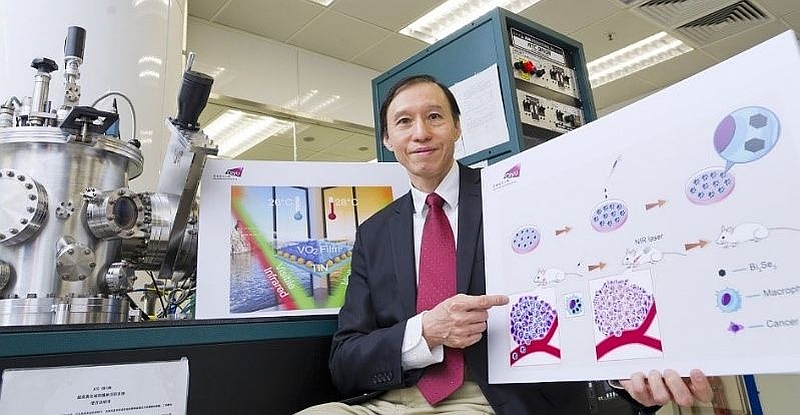Effective “bombs” identified for killing cancer with “Trojan Horse” strategy

The development of a more effective photothermal therapy for treating cancer may now be one step closer.
Based on the study of photoluminescence and light scattering mechanisms, as well as the plasmonic properties of micro-nanostructures, Professor Paul Chu Kim-ho, Chair Professor from the Department of Physics and the Department of Materials Science and Engineering at the City University of Hong Kong (CityU), together with his team of researchers from CityU and Nanjing University, has developed two breakthrough applications, including the one for killing cancer cells.
As an emerging cancer treatment, photothermal therapy involves the targeted delivery of the photothermal agents to tumors. Professor Chu described this strategy as a “Trojan horse” carrying “bombs”. “When the ‘bombs’ interact with near-infrared light, the temperature rapidly increases, killing the tumours.” Encouragingly, his team has discovered two effective types of carriers of photothermal agents: Bi2Se3-laden-macrophages and Nile blue dye with black phosphorus.
“Both types of carriers with photothermal agents possess good biocompatibility, and most of the materials can be excreted from the body within 25 days to eliminate potential cytotoxicity,” he explained. In trials, the tumours in mice were completely destroyed and removed, with no recurrence until the end of the experiment. He said that photothermal therapy was minimally invasive and fast-acting, and could easily be combined with other therapeutic approaches.
With the importance of this research, Professor Chu and his team have earned the highly prestigious First Class Award (Natural Science) in the 2017 Higher Education Outstanding Scientific Research Output Awards (Science and Technology) of the Ministry of Education, China.
Another important application of the research involves the thermochromic smart coating. For details, please see here.